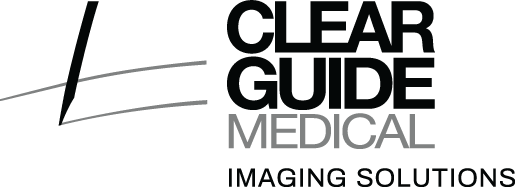- I Gratz et al.: Case Report: New Guidance Technology Offers Promising Results in Reducing Mid-Line Catheterization Times Compared to Standard of Care in Initial Patient Experiences (pre-print 2017) abstract
“[Instrument guidance] technologies would also serve as useful training mechanisms for shortening learning curves for incoming residents. Overall, utilization of new guidance technologies in [midcath] offer clinical value to anesthesia departments.”
Clinical uses of Clear Guide SCENERGY for soft and hard tissue biopsies and ablations.
Pre-Clinical
- A. Thomas et al., Conventional Versus Computer Assisted Stereoscopic Ultrasound Needle Guidance for Renal Access: A Randomized Bench-Top Crossover Trial, Journal of Urology, Vol. 197, No. 4S, Supplement, Friday, May 12, 2017. Received the Olympus Best Paper Award for Best Innovation Paper of the Endourological Society, 2017.
- V Karaliou et al.: Evaluation of the Clear Guide ONE System versus Conventional Ultrasound Guided Vessel Cannulation in Swine (ELSO 2016) poster
- C Wilson et al. (2017): New Ultrasound Technology Is a Useful Training Adjunct for Invasive Procedures paper
- J Thai et al.: US / CT fusion-guided needle placement with mini cameras mounted on ultrasound: A phantom study (pre-print 2016) abstract
- D Pechman et al.: Computer-Assisted Instrument Guidance: Enhanced Procedural Efficacy and Safety (SCCM 2016) poster abstract
“Preliminary results to date show certain favorable outcomes in that [the Clear Guide SCENERGY] reduced the number of attempts and overall time to cannulation and thus may be a useful adjunct during vascular access.
The added benefits of [the Clear Guide ONE] might be especially important in complicated cases where additional visualization improvements might be beneficial. Such cases include extracorporeal membrane oxygenation or emergency catheterization of patients in non-heart beating state during ECPR.”
“These results suggest that supplementation of ultrasound-guidance with CAIG [Clear Guide SCENERGY] enhances procedural efficacy and decreases risk of damage to adjacent tissue. The benefits of CAIG, especially for novice ultrasound operators, reflect its potential value as a clinical and educational tool.”
“Most residents (67%) reported that the [Clear Guide SCENERGY] increased confidence. The vast majority (94%) reported perceived improvement in speed, accuracy, or both. […] Our results suggest that the technology may emerge as a valuable tool in training less-experienced resident learners in EM and any specialty that utilizes ultrasound to perform invasive procedures.”
Technical
- E Basafa et al.: Visual tracking for multi-modality computer-assisted image guidance (SPIE MI 2017) paper
- E Basafa et al.: Fast, Intuitive, Vision-Based Performance Metrics for Visual Registration, Instrument Guidance, and Image Fusion
(MICCAI CLIP 2016) paper [> springer.com] - P Stolka et al.: Needle Guidance using Handheld Stereo Vision and Projection for Ultrasound-based Interventions (MICCAI 2014) paper [> springer.com]
- P Stolka et al.: Clear Guide ONE: Local Optical Tracking of Instruments and Probe for Interventional Ultrasound Imaging (UITC 2014) paper [> uitc-symposium.org]
- X Wang et al.: The Kinect as an interventional tracking system (SPIE MI 2012) paper [> spie.org]
- P Stolka et al.: Navigation with Local Sensors in Handheld 3D Ultrasound Initial in-vivo Experience (SPIE MI 2011) paper [> spie.org]
“A variety of experiments characterized the performance of all workflow steps under a wide range of conditions (lab, veterinary, and clinical). The results show the system to be at least as good as established systems (e.g. Philips PercuNav […]).”
